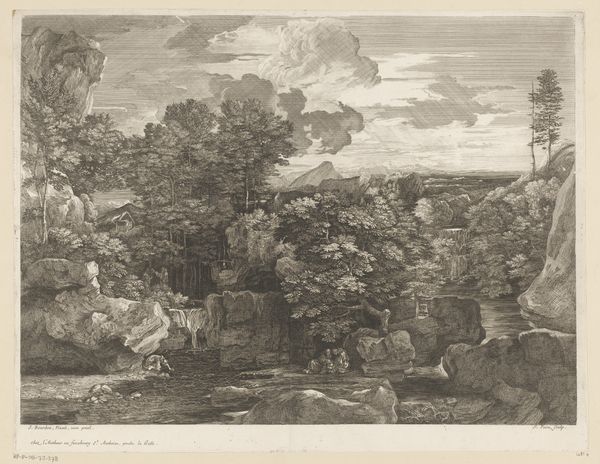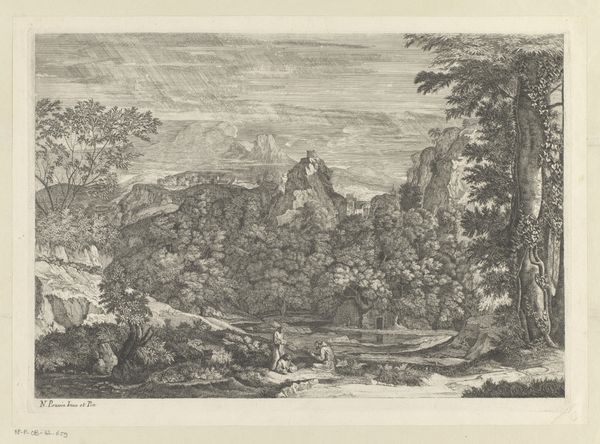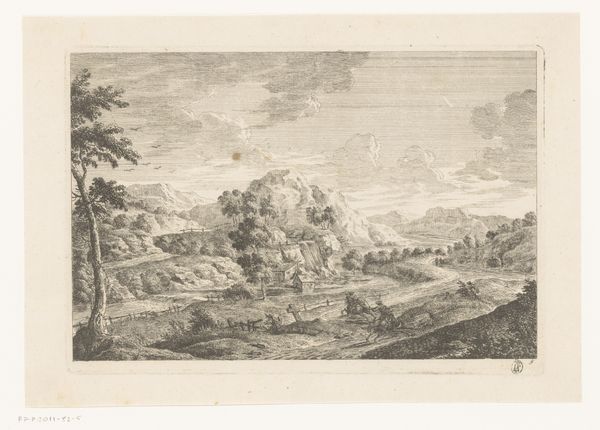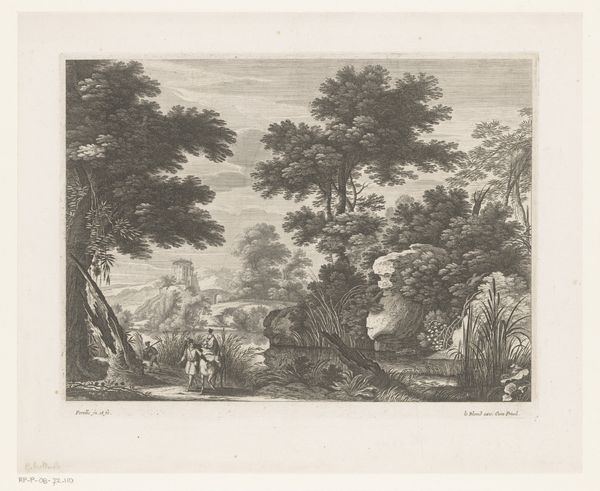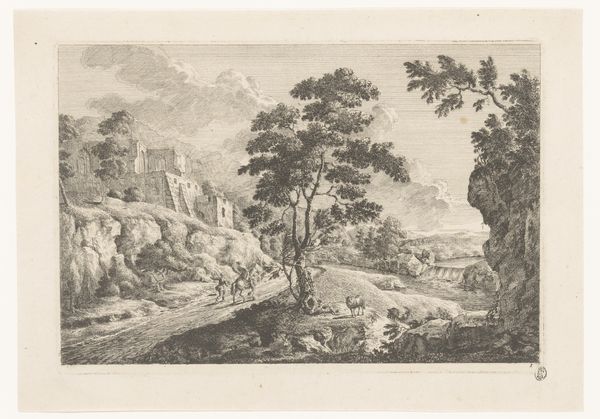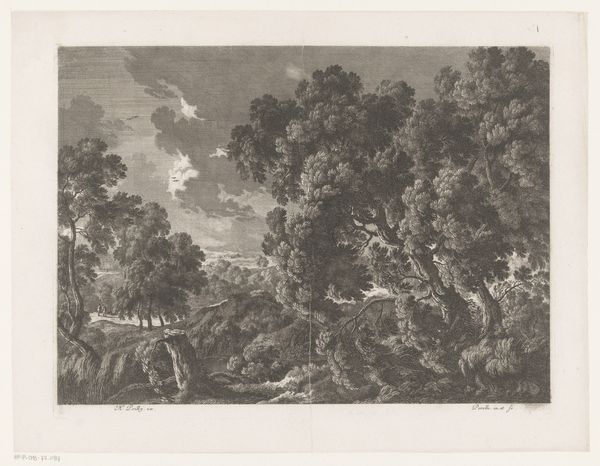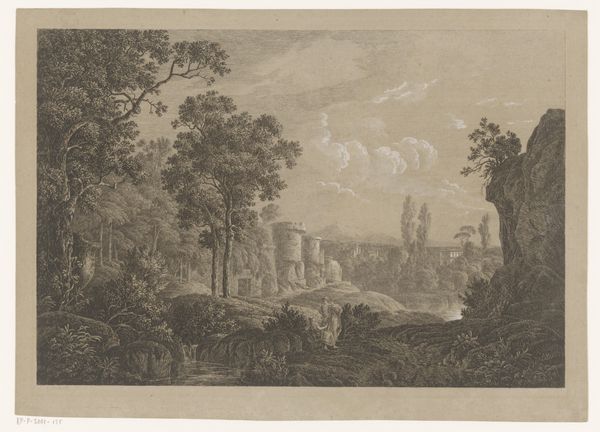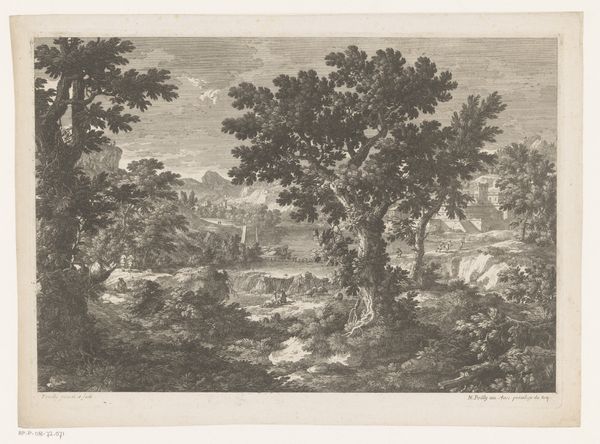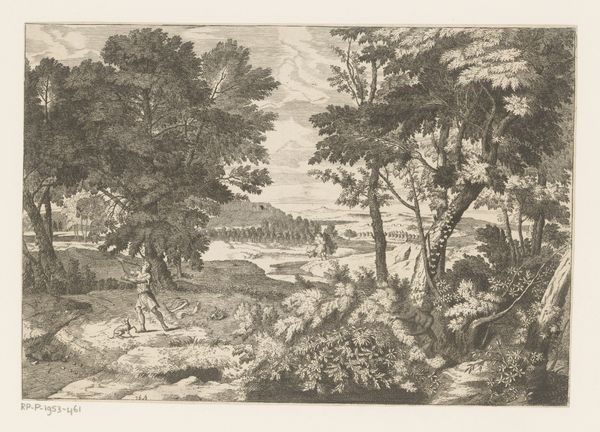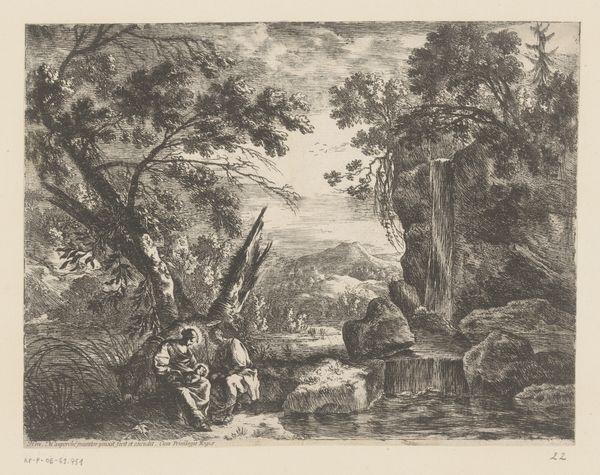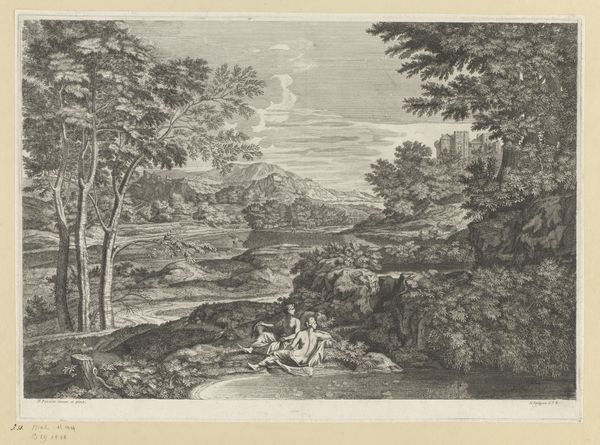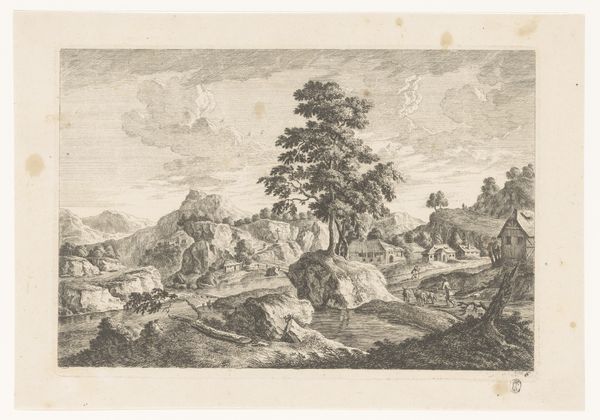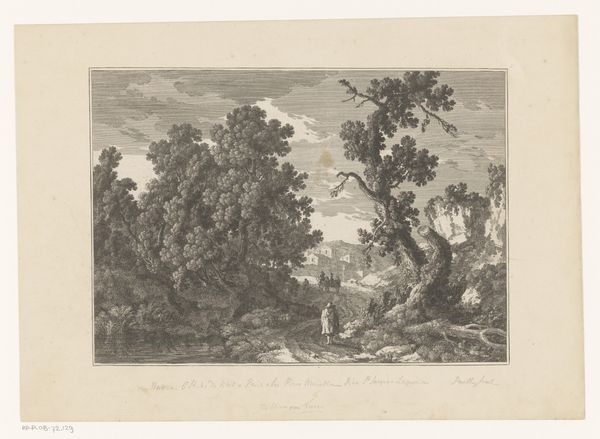
etching
#
baroque
#
etching
#
landscape
#
waterfall
#
genre-painting
Dimensions: height 364 mm, width 464 mm
Copyright: Rijks Museum: Open Domain
Curator: This etching, "River Landscape with Shepherds," attributed to Jacques Prou, offers a captivating glimpse into 17th-century pastoral life. The print depicts a group of shepherds with their flock in a rugged, verdant landscape. Editor: It's rather romantic, isn’t it? The waterfalls and rocky cliffs contrasted against the delicate lines of the figures…there’s almost a melancholy air to the scene. Curator: Indeed. Prou, primarily working in etching, a technique reliant on corrosive acid to incise the design, created a printing plate that yields remarkably intricate lines. Note the tonal gradations. The work highlights a material culture of ink, paper, and the tools deployed in their crafting, Editor: It brings to mind questions around class and labor. Were such images intended for the landed gentry, to further idealize their lifestyle and justify hierarchies? Or for a broader, increasingly urban audience romanticizing rural life? Curator: Perhaps both. Landscape prints were highly sought after during this period. Consider the paper itself; it likely involved a global trade network. These materials underscore the interconnectedness of artistic creation with the socioeconomic currents of the time. The landscape genre here might subtly imply the shepherds' subjugation within a property relation, where they have some kind of agency within the space. Editor: Yes, I agree. The image is suffused with an idealization of rural labor that is blind to its realities, to the often brutal labor, gendered dynamics and hierarchical power structures. What about the treatment of water, a common baroque trope suggesting purification or cleansing… perhaps signaling to us, even then, about nature's redemptive promise, even amidst toil? Curator: I appreciate the intersectional lens you’ve applied, especially in reading water as a symbol of nature's ability to 'cleanse'. By examining the materials – the very means of its production, the lines of engraving and deployment, as well as your suggestion regarding Prou's own potential social and political views, are both essential angles from which to investigate "River Landscape." Editor: Thank you! Reflecting on these interpretations hopefully illuminates how even seemingly bucolic scenes like this one were tangled with social realities of their time.
Comments
No comments
Be the first to comment and join the conversation on the ultimate creative platform.
